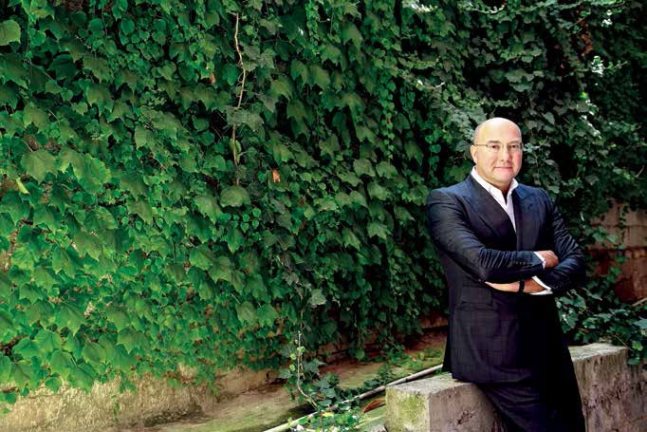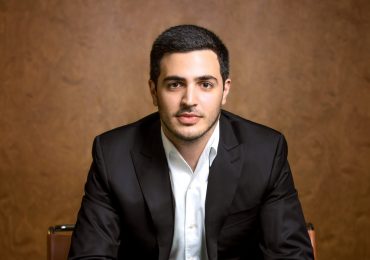One afternoon in mid-September, Italian businessman Davide Bollati was sitting in a gallery on Chardeni Street in Tbilisi looking at a painting hanging on the wall in front of him. Nobody was in the gallery at the time: it was quiet and it was empty. Baia Tsikoridze, the owner of the gallery, opened the space for him so he could enjoy a private viewing. It’s not an easy decision deciding to buy a piece of art, even when you have traveled for this sole purpose – all the way from Italy.
“I saw Merab Abramishvili’s paintings on the Sotheby’s website. I was just scrolling on the page. But you know how certain art just pops-out at you, and you know what you like when you see it? I have had a business in Georgia for five years now, but have never visited the country. The reason I finally came to Georgia was to buy a painting,” explained Bollati.
“This scenario is a result of Georgian art being presented to wide international audience,” says Baia Tsikoridze. “It was back in 2013 and 2014 that Georgian artists participated in Sotheby’s auction. It was an experimental project, and the art focused on Caucasian and Middle-Asian countries. Among the other artist, our gallery also presented the works of Merab Abramishvili,”Tsikoridze recalled.
Abramishvili’s Man-eater of Kumanon sold for £35,000. The following year, the auction house priced his piece entitled Piano at £25,000. In the end, the works of Georgian artists were listed on both the Sotheby’s website and in catalogues. The auction was not only a perfect opportunity to sell Georgian art, but also a great chance to raise the profile of Georgian art globally. It provided an opportunity for art-lovers and collectors from around the world to see their work. In the end, it is Sotheby’s that brought Mr. Bollati here,” Tsikoridze said.
There are about ten paintings on the wall. Among them hangs Abramishvili’s famous Black Panther – an ethereal little angel peering out from the corner, a meticulously painted sunflower with seeds resembling fine lace from a distance. While my eyes roam the wall, Davide’s eyes are transfixed on the painting of a blooming tree that is so translucent, that it becomes almost transparent in the sunlit room.
“I love plants,” he admits. “I’m building a green village in Prama, and there will be a greenhouse and biodiversity garden there as well. I like his (Abramishvili) paintings of plants and flowers. It just so happens that I am not particularly interested in humans or animals,” notes Bollati.
Mr. Bollati is the President of the Davines Parma Company, which owns the trademarks Davines – hair care products and Comfort Zone the skin care for premier spas. Both are made with organic ingredients and with a sustainable approach. Since founding the company in Parma, Italy in 1983, the Bollati family has put a huge emphasis on environmental sustainability and awareness. Despite their incredible growth (their products are currently sold in more than 75 countries worldwide, resulting in €94 million in revenue in 2015), the Bollati family has stayed true to their promise, and produce high-quality products that are by all measurable standards, sustainable. The main inspiring factor in Bollati’s business is his passion for sustainable beauty, a combination of technology and respect for the environment. “We don`t want to be the best in the world, we want to be best for the world,“ he says
Bollati seems to be cautious; he is not an impulse buyer for sure. So we decided to talk about a weighty decision he was about to make.
How does your profession working in the beauty industry affect your aesthetics on art or raise your standards?
I am an idealist. I idealize beauty. What we do at Davines is kind of aesthetic intervention. So beauty and ideal looks might be a part of it. Beauty for me is a promise of happiness; it is a good medicine that is also very useful – but that might be the pharmacist and cosmetic chemist in me that wants to heal.
How did you develop such an attraction to art?
I am the restless type – always in search of something. My search as a scientist can be tiring, so I’ve been looking for something that would give me peace and a sense of harmony. I have few pictures in my house that do that, the kind that have a curative effect on me. I have photos created by Italian photographers – people like Mimmo and Francesco Jodice… I love their landscapes and sceneries. I am fascinated by the Arte Povera movement and by Alighiero Boetti’s work in particular. Contemporary German photographers Thomas Ruff and Candida Höfer are also some of my favorites.
What is the most crucial aspect to your decision when purchasing art?
I mostly rely on my heart. That means I have to fall in love with a piece before I can buy it. Sometimes the love is short-lived and sometimes it goes on forever. There are art pieces out there that resonate with me very much. But buying a piece should also be an economically sound decision. As told you, it’s very personal. That’s why I wanted to see Abramishvili’s paintings in person and learn the story behind his work, not just buy it online. As a patron you’re familiarized with the artist’s work in the most intimate way, as the painting or sculpture becomes part of your house and daily life. I also think about the space I have before buying something.
In the end, the space and the size of painting turned out to be crucial. Love aside, the painting should fit perfectly right above Bollati’s fireplace. He chose the bigger one, a painting entitled Tree.
“It represents Eudemonia to me,” says Bollati, as he signed the contract.
“Happiness is the highest human good.”














